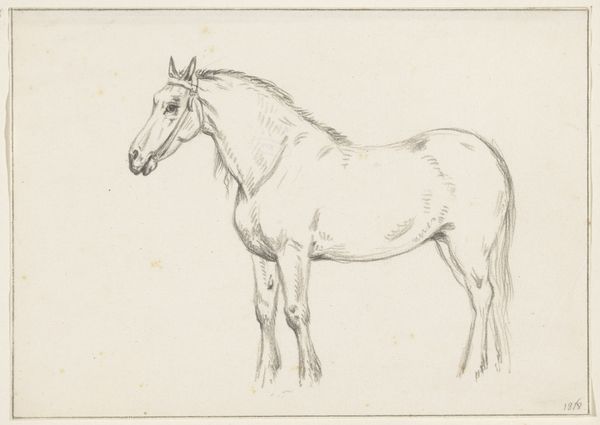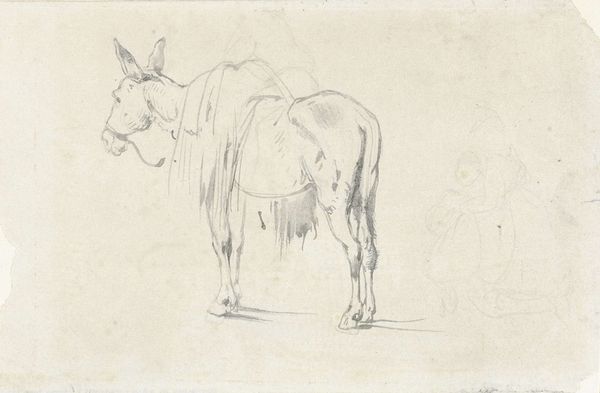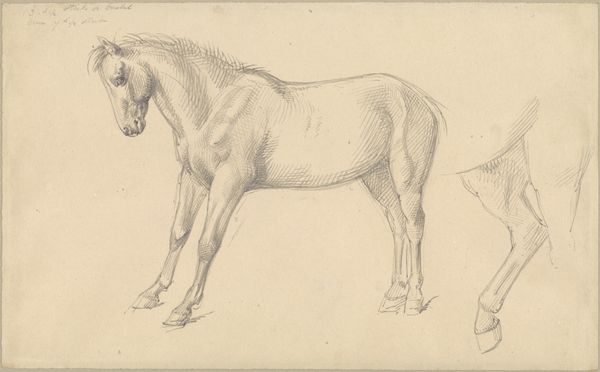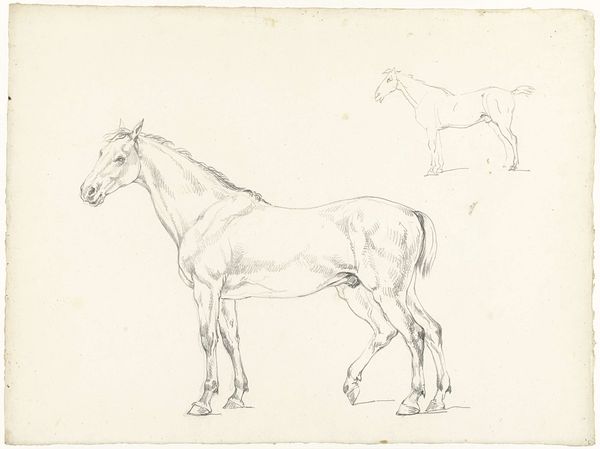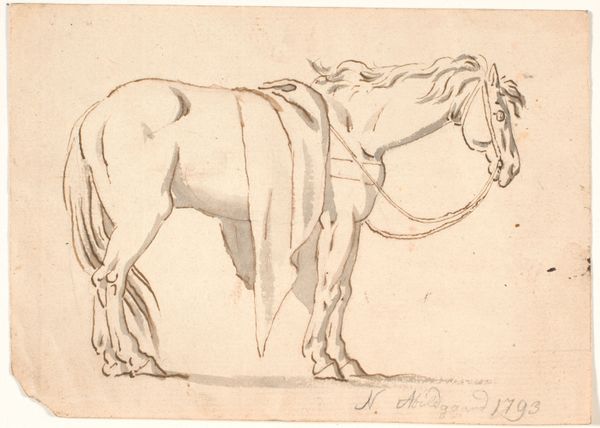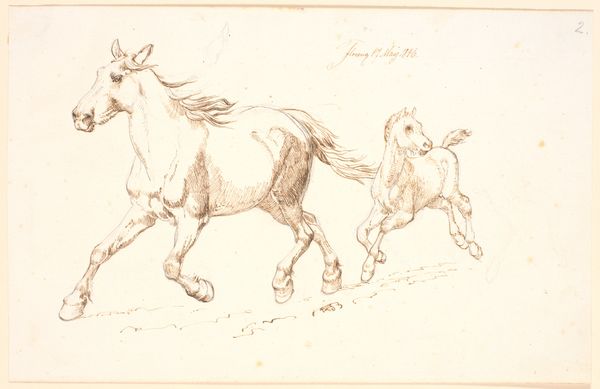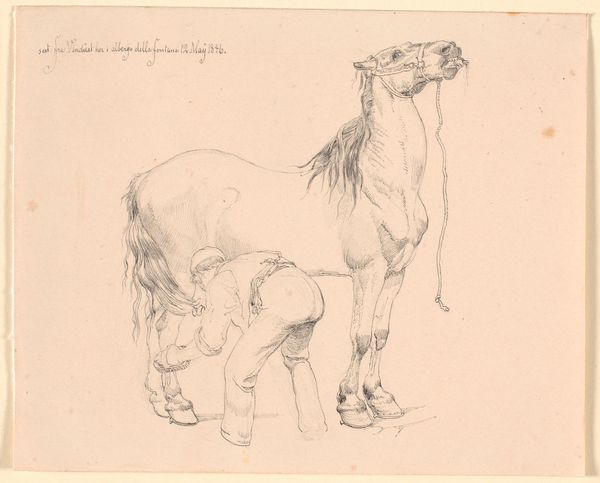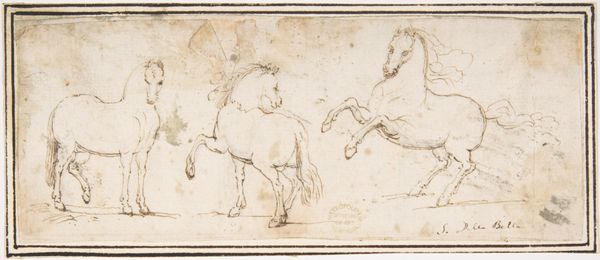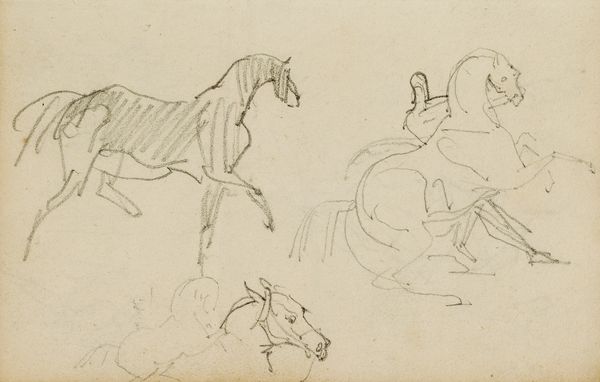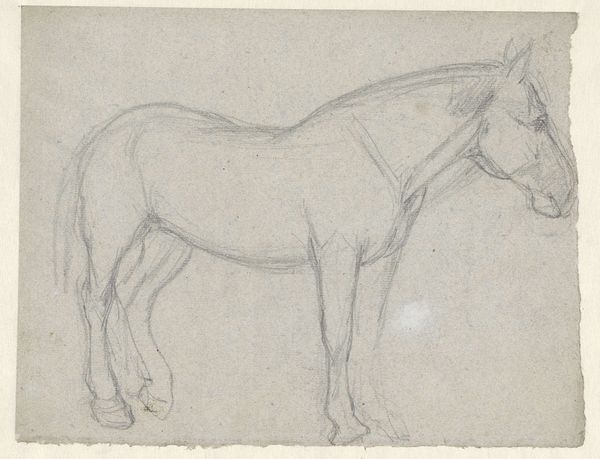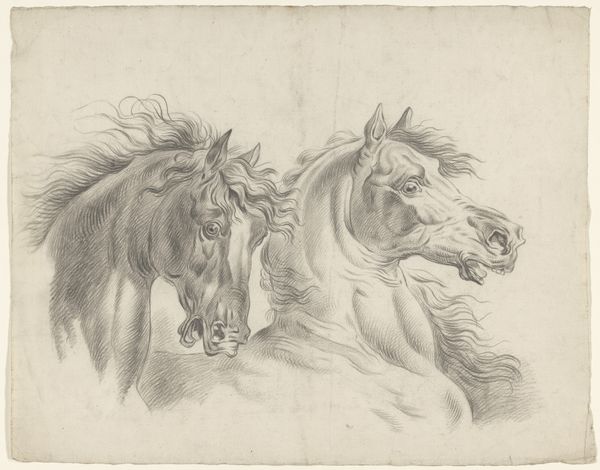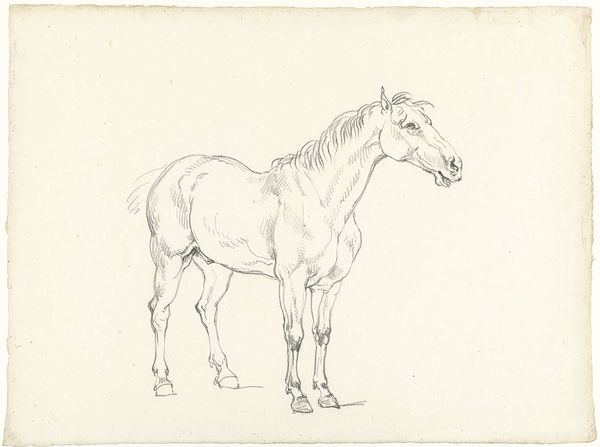
drawing, ink
#
drawing
#
landscape
#
figuration
#
ink
#
romanticism
#
horse
#
realism
Copyright: Rijks Museum: Open Domain
Editor: Here we have Johannes Tavenraat’s "Studieblad, onder andere met paarden," from 1839. It’s an ink drawing featuring studies of horses and human faces. The loose lines give it a very immediate feel, like we’re seeing the artist's thought process in real time. What strikes you about this work? Curator: What grabs my attention is how the very *act* of drawing is foregrounded. We're not presented with a finished, polished "product," but rather a glimpse into the artist’s labor. Consider the repetitive strokes, the corrections. This drawing underscores the manual skill and effort involved in artistic creation. What kind of social dynamics of labor were at play? Who had access to the materials of artmaking, like ink and paper, in 1839, and how does this accessibility, or lack thereof, shape what kind of art gets made? Editor: That’s interesting. I hadn't really thought about the social context of materials. Curator: Think about it this way: ink and paper, seemingly simple, were commodities shaped by trade and manufacturing practices. The quality and availability of these materials directly impacted Tavenraat’s artistic practice. What narratives about labour and material consumption does the drawing unintentionally reveal to us? Editor: So, even something as seemingly straightforward as a drawing of a horse can actually tell us a lot about the economic and social conditions of the time. Are the horse breeds indicators of luxury or rural life and associated labor practices of the time? Curator: Precisely! These visual representations can then be thought of as embodiments of consumption within that societal context, both revealing the resources, the economic framework available to Tavenraat as he developed the work. Editor: I guess I've always thought of art as being separate from the practical, everyday world, but this makes me realize how connected they really are. I’ll never see a simple sketch in the same way again. Curator: Wonderful! Considering art as fundamentally linked to processes and tangible items is what this is all about.
Comments
No comments
Be the first to comment and join the conversation on the ultimate creative platform.

